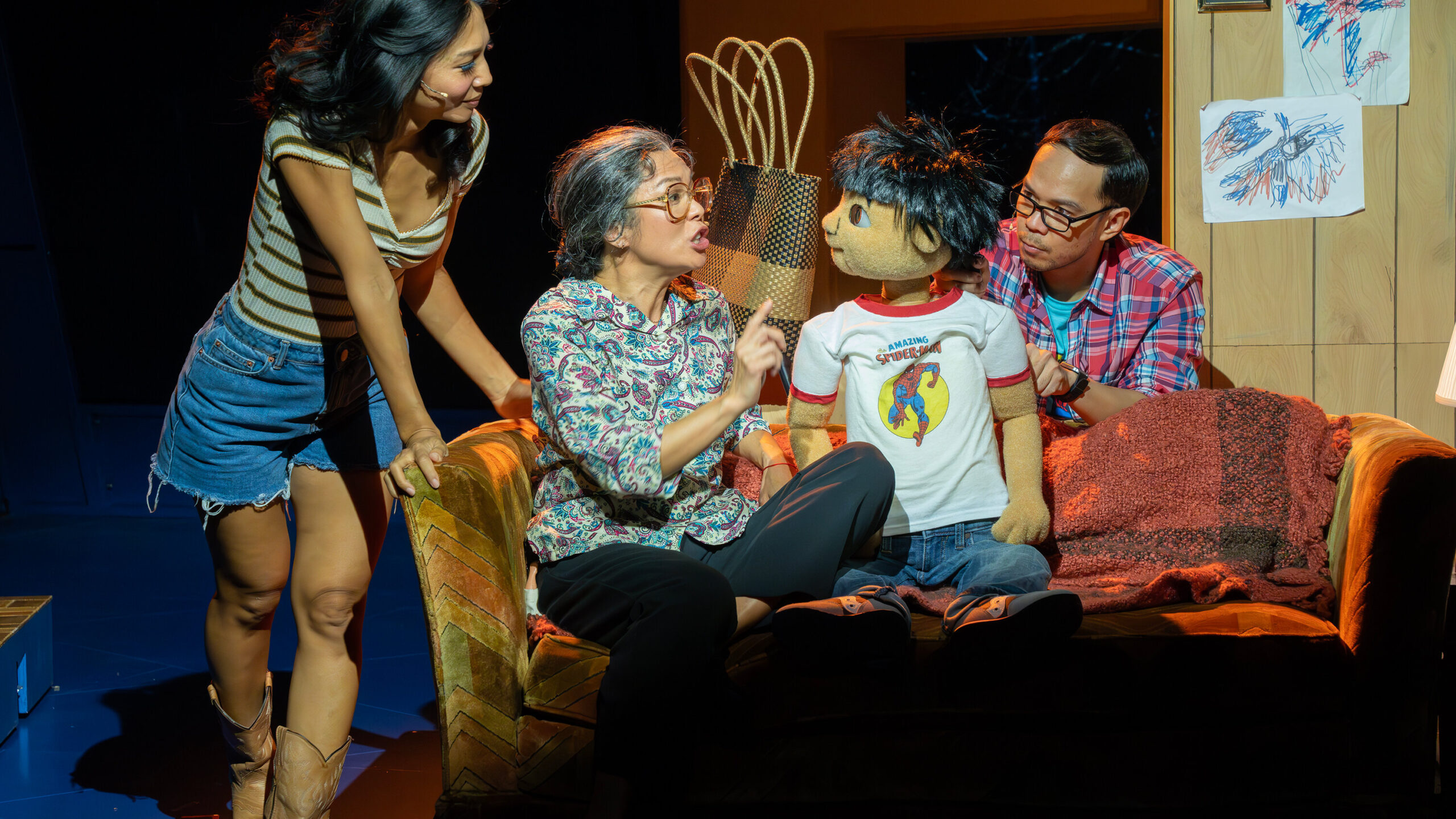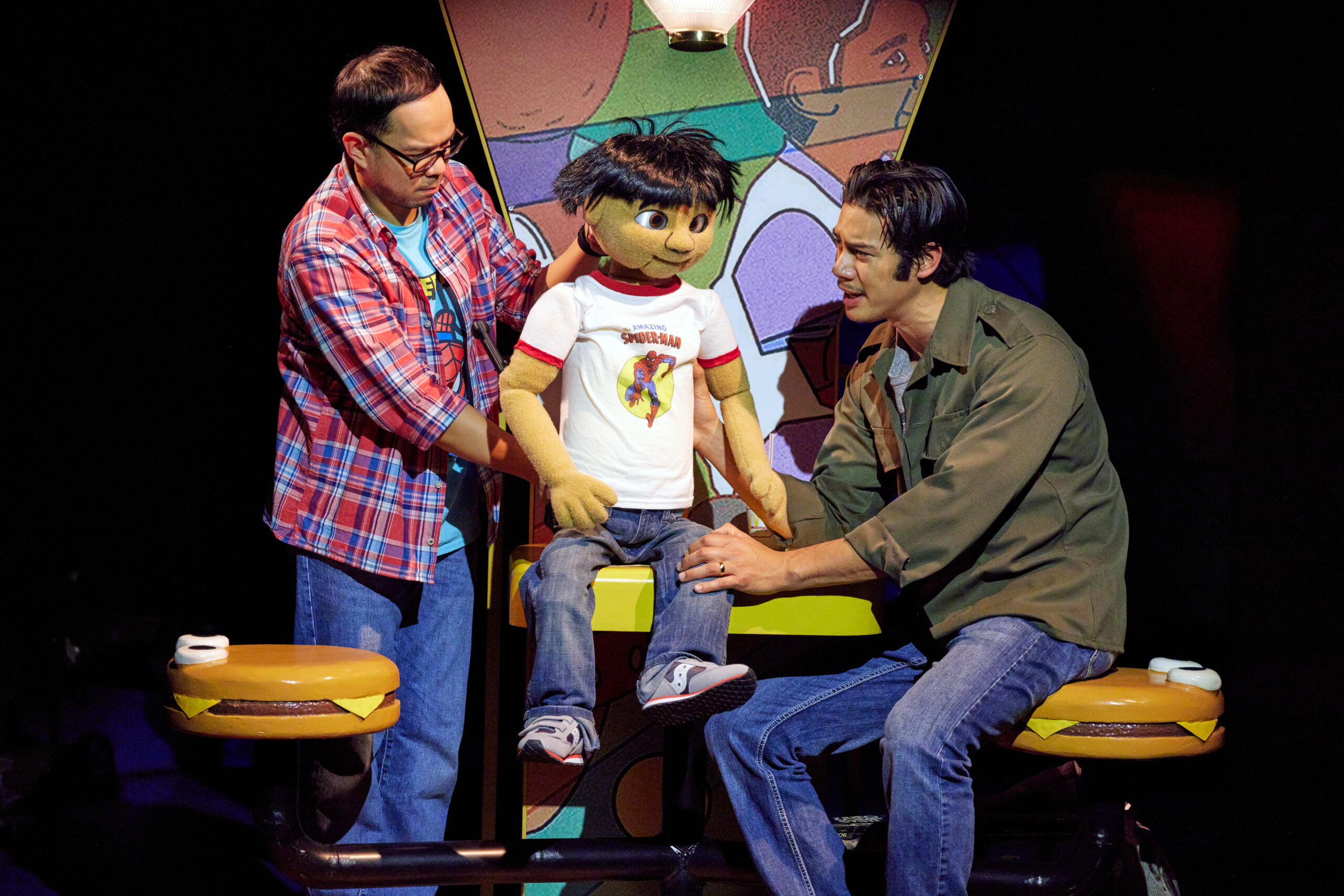Writer Qui Nguyen’s play “Vietgone” is the “slightly” true story about his parents meeting in a Vietnamese refugee camp in Arkansas. They have a multitude of factors against them from his father already being married and his mother failing to become accustomed to her new life in the U.S.
“Vietgone” is the first part of their story.
“Poor Yella Rednecks” completes it.
This show follows Tong (Maureen Sebastian) and Quang (Ben Levin) attempting to put down roots in Arkansas. Things don’t come easy for them as infinitely, racism, and poverty begin to immerse their life. However, the couple, their son, and Tong’s overbearing mother Huong (Samantha Quan) learn a few lessons along the way that assist them in growing as a family.
Qui Nguyen is best known for his work with Disney as both a writer on “Raya and the Last Dragon” and “Strange World”. Based on this, his love of fantasy and pop culture flourish in his theater works. For example, in the beginning of the play, the Playwright (Jon Norman Schneider) passes the reins to the greatest storyteller of all time for the introduction—Stan Lee. Nguyen creates a script and story that is not only filled with humorous references to pop culture, but with salacious and witty dialogue. A few minutes into the play, an elder Tong informs her son she wants him to write her words in the same cadence as white people. As he types, her Vietnamese accent is suppressed by a valley girl accent and a great amount of cursing.
The comedic elements of the play are truly unique. It’s not only the wording, but also the actions of the ensemble. Nguyen uses rapping to convey the feels of multiple characters. It could be viewed as an absurd choice to some, however, the direction to include rapping is brilliant. In the beginning of the story, Tong tells the Playwright that she wants him to write something that white people will enjoy. When thinking about theater these past few years, many immediately think of the legacy that Hamilton has left to where rapping can be considered an art form within theater. However, one would be surprised to find that not all musicals have rapping in them especially older white people who are Broadway’s biggest fans.
Nguyen’s uses of satire and absurdity are another aspect to the production’s brilliance. Little Man is voiced by the Playwright, but a puppet is used as his body. There are a number of fight scenes inspired by anime paired with the use of dramatic music to where scenes feel ridiculous. One would even begin to question what’s going on; and that is exactly where the charism of the production lies. Director May Adrales lets the audience feel as though they’re trapped by oddity, but deep down the production reveals harsh truths.

Maureen Sebastian, Samantha Quan, a puppet, and his puppeteer, Jon Norman Schneider in “Poor Yella Rednecks”
A major theme that Nguyen nails perfectly in the production is assimilation. Little Man struggles to learn English and one of the most touching scenes is the one in which Huong tells him that she is willing to not speak to him so that he can learn English. She accepts that for him to have a normal childhood, she has to distance herself. Furthermore, the switching of languages and refusal to put a Vietnamese accent on the characters is another way in which assimilation is shown. While it may be considered a satirical choice, unfortunately it goes to show how for the most part immigrants have to dial back on their native language to be accepted into society. It’s a hard truth that carries the entire play.
The cast’s chemistry is magnificent. There’s such great tension between Sebastian and Levin as the couple that one doesn’t have to imagine them as struggling pair, you simply feel it. Quan plays a wise, and oftentimes harsh Huong. Huong is sure to be a fan favorite amongst audience goers. However, we can’t forget about Paco Tolson as Bobby, Tong’s on-and-off boyfriend. Bobby’s timidness and genuine curiosity made for some of the greatest running jokes of the entire production. Overall, each cast member accomplishes playing off one another’s strengths. You’d often desire to see the characters again once they are off stage.

Jon Norman Schneider, a puppet, and Ben Levin in “Poor Yella Rednecks”
The scenic design of “Poor Yella Rednecks” is another remarkable aspect of the play. Tim Mackabe’s use of giant yellow letters spelling out “YELLA” not only added to the visual impact, but served as a clever mechanism for scene transitions. Each letter became a transformative element, seamlessly shifting the atmosphere and transporting the audience to different settings. Never has there been a show that uses such smart and intentional staging. Overall, “Poor Yella Rednecks” is the testament of an exceptionally talented cast and crew led by the even more exceptional direction of Adrales.
“Poor Yella Rednecks” is funny, fearless, and fantastic! The audience I sat in skewed a little older and less diverse than I hoped. The theater world continues to diversify itself on stage, but the audiences tell a different story. This is a story I highly recommend for those who are younger and who are like me—a first-generation immigrant. The story of “Poor Yella Rednecks” is something I and many others can relate to. Not belonging, being unseen, and having to change oneself to be accepted by the majority. But, “Poor Yella Rednecks” isn’t only about the trials of assimilation. It’s a celebration of family, forgiveness, unconditional love, and perseverance. It’s a story about the people who struggle the most, but are truly the heart of this country. My hope is that everyone can feel the spirit of “Poor Yella Rednecks” as we think of the future of our country.
“Poor Yella Rednecks” is a Manhattan Theater Club production running now at New York City Center Stage.
Tickets can be found online.
